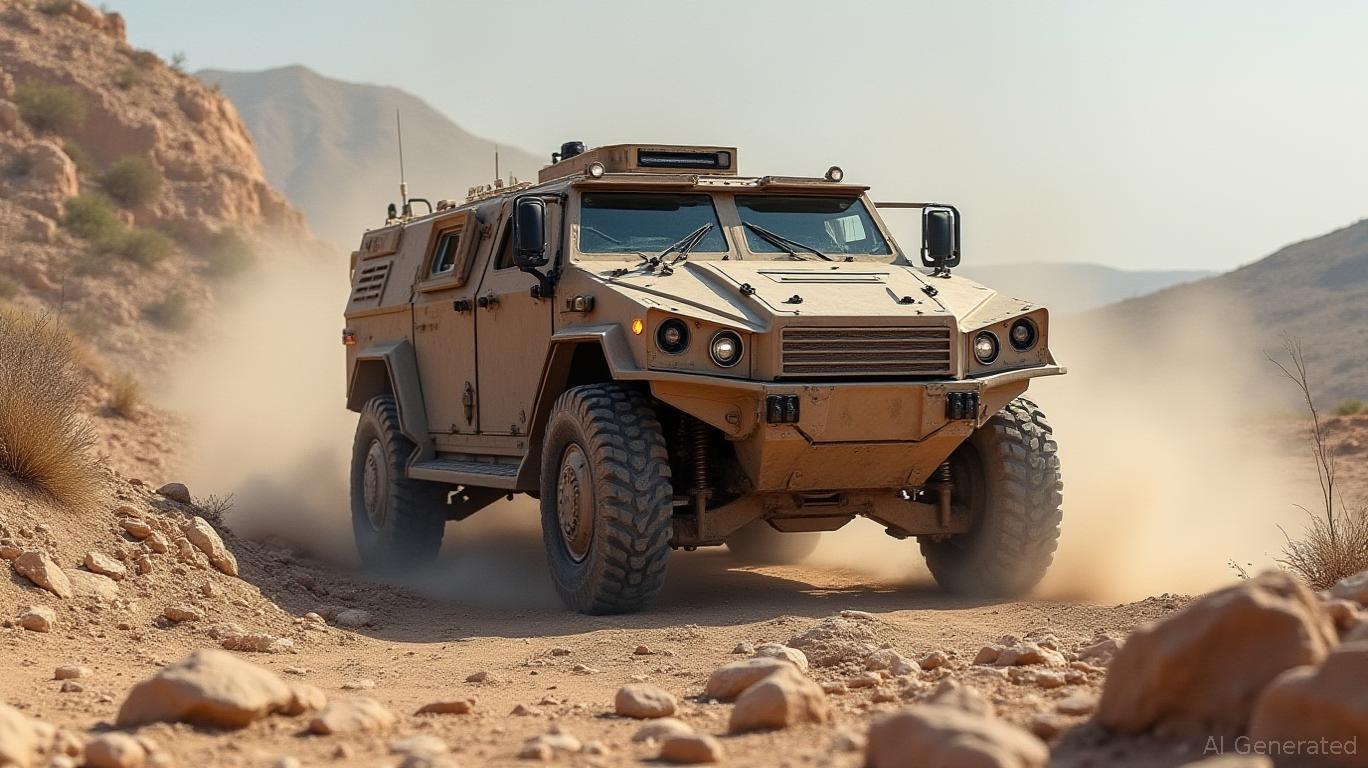General Dynamics: Navigating Defense Procurement Risks Amid Contract Termination Headwinds
The U.S. Army's abrupt cancellation of the M10 Booker light tank program in June 2025 has exposed systemic vulnerabilities in defense contracting, raising critical questions about the financial and operational risks facing contractors like
Systems (GDLS). The termination, driven by design overruns, logistical constraints, and restrictive maintenance clauses, underscores a broader shift in Pentagon priorities toward agility and cost discipline. For investors, this incident signals the need to scrutinize General Dynamics' (GD) portfolio for programs with stable demand and post-production flexibility—particularly those avoiding the "Frankenstein" design pitfalls and restrictive terms seen in the M10 Booker.
The M10 Booker: A Cautionary Tale of Contractual Rigidity
The M10 Booker's cancellation stemmed from three interlinked flaws: excessive weight, unworkable maintenance clauses, and evolving mission requirements. The vehicle's 42-ton weight negated its original air-transportability, while its "right-to-repair" terms barred the Army from independently maintaining the system—forcing reliance on GDLS for even minor fixes. This contractual inflexibility drew sharp criticism from Pentagon leadership, including Secretary Dan Driscoll, who likened it to the stifling restrictions in civilian industries. The Army's decision to terminate a $1 billion program with 26 units already delivered highlights the financial risks of projects where design compromises erode core utility.
For General Dynamics, the termination's immediate impact is manageable: the Army will accept existing vehicles, and termination clauses likely limit penalties. However, the episode reveals deeper risks.
Portfolio Diversification: Where GDLS Shines—and Stumbles
To assess GD's risk exposure, investors must evaluate its broader portfolio beyond the M10 Booker. Key programs include:
Stryker DVHA1 Modernization ($712M Contract):
The Stryker's modular design allows rapid upgrades, such as enhanced engines and digital networks, ensuring adaptability to evolving combat needs. Its maintenance contracts, including a $428M field support deal, emphasize user autonomy—a stark contrast to the M10's restrictive clauses. The Stryker's global sales (e.g., to Poland's navy) and role in the Army's largest vehicle fleet position it as a stable cash flow generator.MK 41 Vertical Launching System (VLS):
The MK 41's open architecture and modular cells (supporting 9+ missile types) exemplify post-production flexibility. Subcontractor partnerships, such as those with GDLS for subassemblies, ensure repair and upgrade pathways without vendor lock-in. With 180 ships globally relying on this system, demand remains robust even as navies modernize.M1 Abrams Upgrades:
The Abrams' dominance in heavy armor markets, paired with incremental upgrades (e.g., improved thermal sights), offers steady demand. However, its high cost and reliance on traditional combat doctrines may face long-term headwinds as the Pentagon prioritizes lighter, networked systems.
Red Flags: Contracts with Shifting Requirements
The M10 Booker's fate underscores risks in programs where mission parameters shift mid-development. GD's current pipeline includes the XM30 Lynx infantry fighting vehicle (a collaboration with BAE Systems), which leverages modular designs and open systems. Yet, this project's success hinges on avoiding the M10's pitfalls of conflicting priorities—such as balancing weight constraints with lethality.
Investors should also monitor GD's non-defense segments, including its Bath Iron Works shipbuilding division. While submarine and destroyer programs offer steady revenue, geopolitical tensions (e.g., U.S.-China rivalry) may amplify demand here—though supply chain bottlenecks persist.
Investment Strategy: Prioritize Modular, Maintenance-Friendly Programs
The M10 Booker cancellation is a wake-up call for investors to favor GD's programs with three key traits:
1. Modular designs enabling cost-effective upgrades (e.g., Stryker, MK 41).
2. Non-restrictive repair terms allowing military customers to manage maintenance.
3. Demand stability from long-service lifecycles or international sales.
Conclusion: A Call for Prudent Portfolio Reassessment
General Dynamics remains a pillar of U.S. defense contracting, but the M10 Booker's cancellation illuminates vulnerabilities in projects lacking flexibility. Investors should advocate for GD to:
- Terminate or renegotiate contracts with restrictive maintenance clauses.
- Prioritize modular programs that align with Pentagon modernization goals.
- Diversify beyond legacy systems (e.g., Abrams) toward networked, lightweight platforms.
For now, GD's stock appears resilient, but long-term success hinges on learning from the M10's failure. Investors should remain vigilant, favoring the company's agile programs while hedging against projects prone to design creep and contractual rigidity. In a defense landscape demanding agility, General Dynamics must prove it can adapt—or risk becoming the next cautionary tale.

Comments
No comments yet